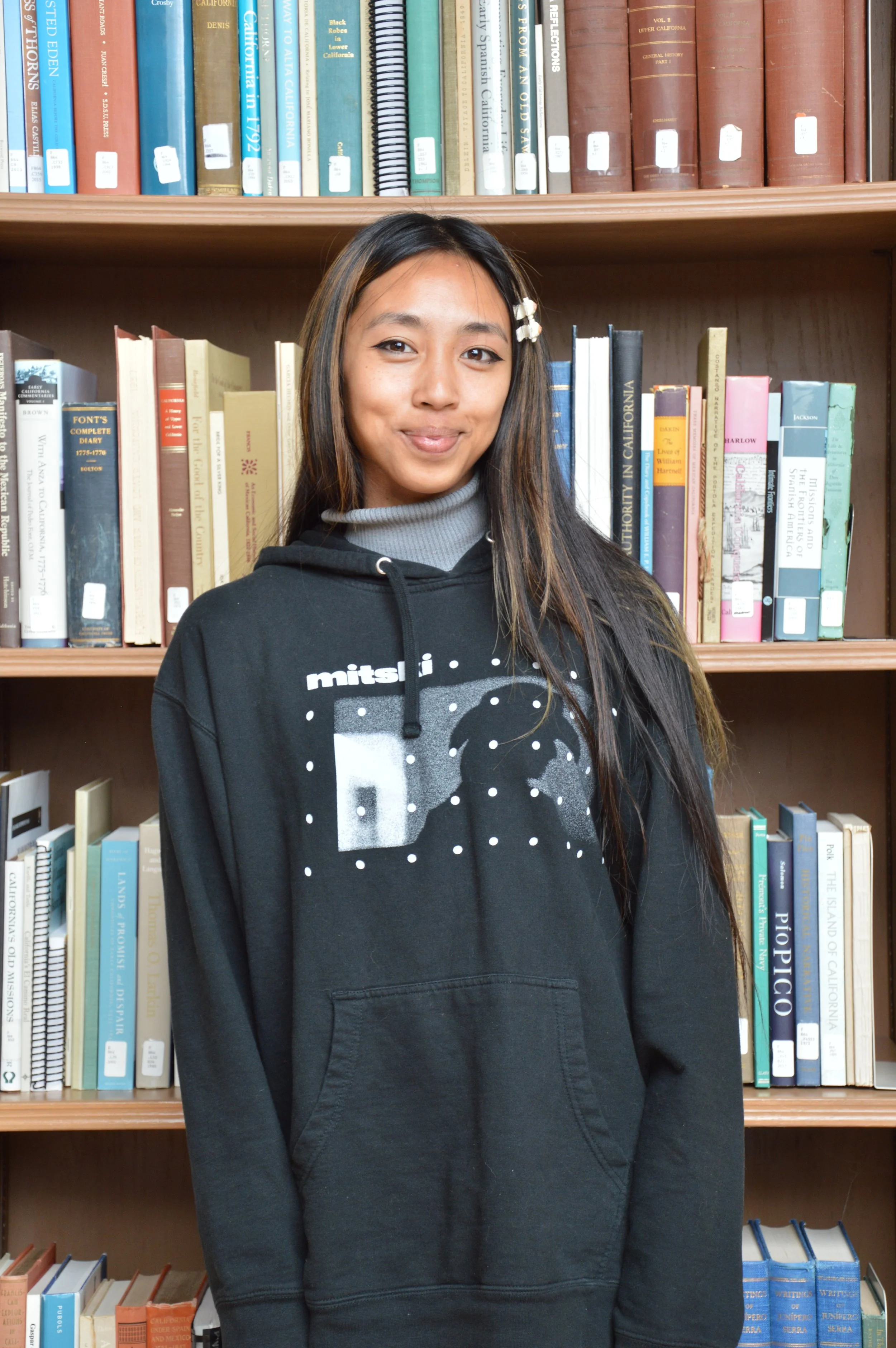My Serendipitous Internship at SBTHP’s Presidio Research Center
By Maia Mislang Hello! I am Maia Mislang, a second-generation Filipina American, raised in Santa Barbara, California. While studying History at the University of California, Santa Cruz, I worked as an intern on “Watsonville is in the Heart” (WIITH), a community-based research initiative that collaborates with the local Filipino community of the Pajaro Valley. Through WIITH, I was trained as an oral historian and community archivist.
Maia Mislang’s family immigrated to Santa Barbara from Cebu in 1980. Maia’s grandparents quickly immersed themselves in the Filipino Community Association (FCA) of Santa Barbara. Many current members of the FCA had participated in the creation of Manongs on the Central Coast, some of whom were descendants of the founding members of the FCA. Photo by Michael Imwalle.
After graduating in June of 2024, I moved back home to Santa Barbara. Heavily impacted by the connections I made with Watsonville’s community partners and hoping to pursue working in local archives, I reached out to Dez Alaniz, the Director of the Presidio Research Center (PRC). at the Santa Barbara Trust for Historic Preservation (SBTHP). Coincidentally, SBTHP was in the final stages of installing a new exhibit, Manongs on the Central Coast: Forming Communities Across Generations, focused on Filipino history and communities of (mainly) Santa Barbara and Lompoc, California. This was exciting because it was the first local Filipino community history project that I had heard of, and it included the voices of family friends.
I first started working in October of 2024 as SBTHP’s Oral History & Archives Intern. First, Dez introduced me to archival theory and decolonization of archives through academic readings, as well as research initiatives conducted through community collaboration. While gaining an understanding of the breadth of archives, I began to learn how to catalog various materials in the library and assist researchers with accessing collections.
Eventually, I focused on processing three recently donated archival collections: the Fuentes Family Collection (MS-36), the Clarito “Bing” Aradanas Papers (MS-60) and the Aradanas Family Collection (MS-64). The Fuentes collection was exciting because many of the donated materials were about the founding of the Filipino Community Association of Santa Barbara. Through this collection (and a related oral history project Dez and Shannon Toribio conducted in preparation for SBTHP’s Manongs on the Central Coast exhibit), I was able to learn more about the history and contributions of our family friends and even see old photographs of my grandfather while he was an officer for Santa Barbara’s Filipino Community Association.
The most intense and comprehensive aspect of the internship was learning how to both intellectually and physically process archival collections. Processing archival collections involves reviewing the materials, arranging them in a logical manner, and describing their contents and connections to other collections.
After reviewing all the donated materials with the original donor, I took inventory of everything Bing offered, then marked everything we decided to keep, which I made into a spreadsheet to help us track objects and emerging series themes. Bing, an experienced scholar, had developed a series that I used as a skeleton for further archival processing. Dez and I created two separate collections, one for Bing and one for his parents.
SBTHP’s Clarito “Bing” Ardanas Papers (MS-60) collection. Courtesy of the Presidio Research Center.
For Bing’s Personal Papers, I fleshed out each series following Bing’s wishes as closely as possible. This was not an easy balance to strike, between honoring all of Bing’s wishes and processing a cohesive collection. I was lucky to have followed Dez’s advice and take notes at the end of almost every day, which helped me keep track of my thinking processes, but even on the last day of working on this collection, Dez and I decided to move items around across series to make finding materials easier for future researchers.
After developing inventory spreadsheets, I populated the series and items of each collection in ArchiveSpace (an archives management software SBTHP uses). I spent many weeks meticulously uploading items and fleshing out the scope and boundaries of each series, cross-referencing Subject Headings with the Library of Congress, cataloging our collections with a widely used and standardized system, while starting to physically process both collections. I took condition notes of each item, separated fragile materials, and removed most metal bits that were attached to items and garments. My final task was to review everything to make sure that our notes were concise. I chopped large paragraphs down and unpublished most item-level descriptions. While it felt silly that months of work produced roughly two sentences compared to the original paragraphs of information, I was proud to have completed processing two archival collections with Dez’s approval and to really feel done with these collections.
I really appreciated my opportunity to learn from and work with Dez at SBTHP. Previously, I had never processed a full archival collection. I feel so lucky that I was able to gain this experience under Dez’s guidance and patience. Dez taught me the importance of a calm and efficient approach to working in archives.
I am also grateful that I was able to work on collections that are closely tied to my historical interests and family history, as I have come out of this experience with a stronger knowledge of the history of the Filipino communities in Lompoc and Santa Barbara. I am thankful for this opportunity and experience at SBTHP, and excited to go into my Master's in Library Science program at UCLA with confidence.


